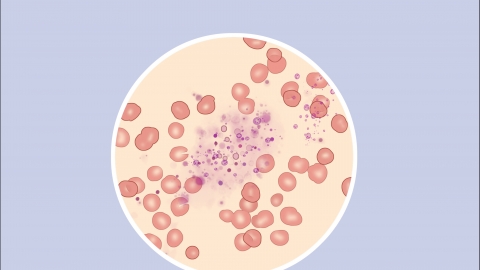What are the common types of small vessel vasculitis?
Common types of small vessel vasculitis include microscopic polyangiitis, Wegener's granulomatosis (granulomatosis with polyangiitis), eosinophilic granulomatosis with polyangiitis (Churg-Strauss syndrome), Henoch-Schönlein purpura (allergic purpura), and isolated central nervous system vasculitis. Detailed analysis is as follows:

1. Microscopic polyangiitis: A systemic necrotizing vasculitis primarily affecting small blood vessels. Common manifestations include fatigue, fever, and weight loss. It may involve multiple organs such as the kidneys and lungs, leading to corresponding organ dysfunction.
2. Granulomatosis with polyangiitis (formerly Wegener’s granulomatosis): Characterized by necrotizing granulomatous inflammation and vasculitis. It commonly affects the upper respiratory tract, lungs, and kidneys. Symptoms include nasal congestion, cough, hemoptysis, and proteinuria. Disease progression can lead to irreversible organ damage.
3. Eosinophilic granulomatosis with polyangiitis (formerly Churg-Strauss syndrome): Features asthma, eosinophilia, and vasculitis. Asthma typically appears first, followed by involvement of small vessels. This may lead to skin nodules, joint pain, and neurological or renal complications.
4. Henoch-Schönlein purpura (allergic purpura): Most commonly seen in children and adolescents, often associated with infections, allergies, and other triggers. It primarily affects the skin, gastrointestinal tract, kidneys, and joints. Clinical features include symmetric purpura on the lower extremities, abdominal pain, hematuria, and arthralgia with joint swelling.
5. Isolated central nervous system vasculitis: A form of vasculitis restricted solely to the central nervous system. Symptoms are diverse and may include headache, limb weakness, seizures, and cognitive impairment. Diagnosis requires exclusion of other central nervous system disorders.
It is important to pay attention to any unusual physical symptoms in daily life. Seek prompt medical evaluation if unexplained fever, rash, or organ dysfunction occurs. Once diagnosed, patients should adhere to standardized treatment protocols, undergo regular follow-up assessments, and avoid delays in intervention that could lead to disease progression.




